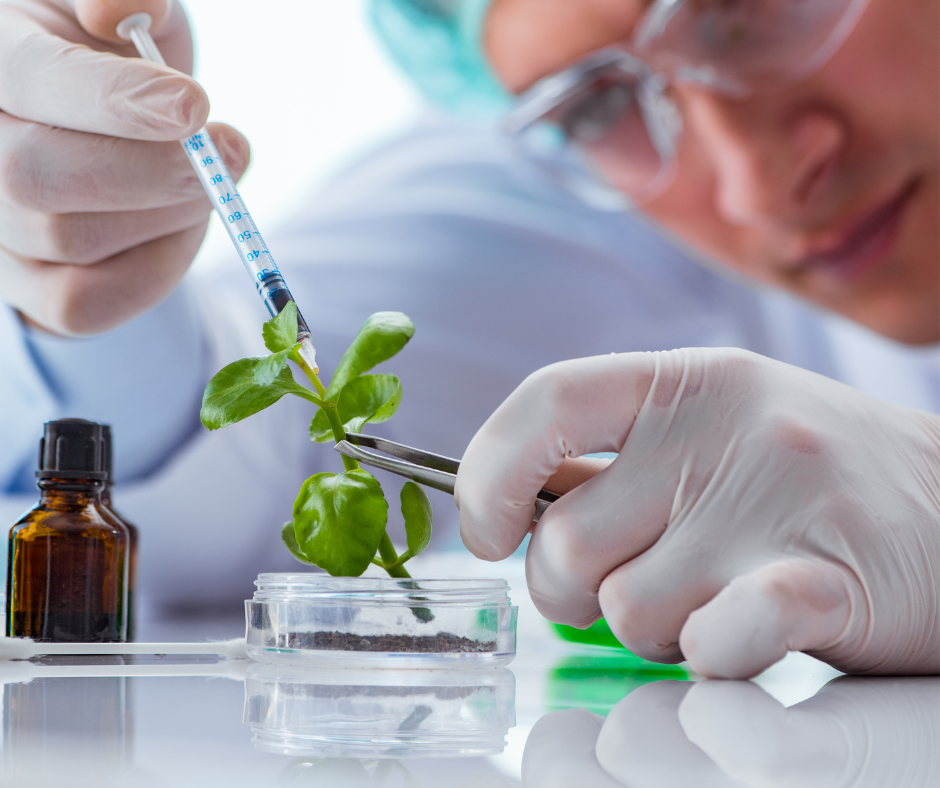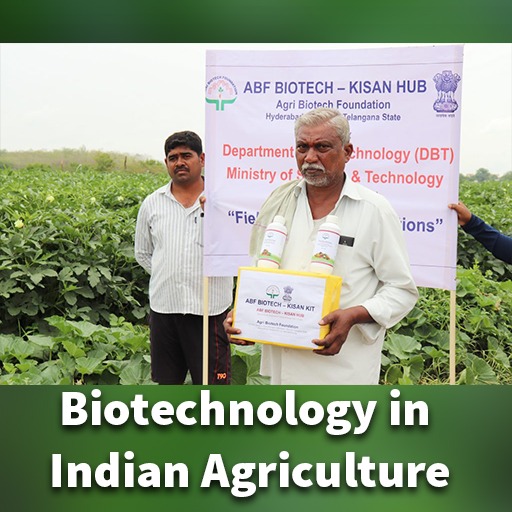Biotechnology in agriculture includes a variety of strategies, notably traditional breeding, which change living organisms or sections of organisms to create or modify things, better plants and animals, or produce microbes for different agricultural uses. The techniques of genetic engineering are now an element of current biotechnology.
Use of Biotechnology in Agriculture:

Biotechnology gives farmers tools to make the output more cost-effective and sustainable. Certain biotechnology crops could be modified to tolerate particular herbicides, making weed control easier and more effective. Several crops have been genetically modified to be resistant to the effects of plant diseases and pests, potentially improving pest control and reducing the usage of synthetic pesticides. Such agricultural production options can assist nations in meeting food requirements while lowering development costs.
Genetic Engineering:
Researchers have discovered how to transfer genes between organisms. Genetic engineering and genetic modification are terms used to describe this process. Despite the term, the technique involves adding genes from other organisms into a plant, animal, or microbe to confer valuable properties, and diseases, or present, nearly every crop enhanced with transferred DNA has been produced to help farmers increase production by minimizing crop damage caused by weeds, insects, and diseases.
Vaccines:
Vaccines produced from biotechnology are utilized in both cattle and humans. They could be less expensive, more effective, and/or safer than standard immunizations. They’re also stable at room temperatures and don’t need to be refrigerated, which is beneficial for farmers in small areas. Some are brand-new vaccines that provide protection against certain infectious diseases for the very first time. In the Philippines, biotechnology was utilized to produce a better vaccination to prevent cattle and water buffalo from (hemorrhagic septicemia), which is the main cause of death in both animals.

Molecular Marketers:
Individual animals and plants are selected based on observable or quantitative characteristics in traditional breeding. And in the lack of a visible feature, researchers can use molecular markers to choose plants and animals that contain a useful gene by analyzing an organism’s DNA. As a result, breeding has become more accurate and efficient. Molecular markers are used to detect unwanted genes which can be removed in coming generations.
Tissue Culture:
The reproduction of crops in laboratories from disease-free plant components is known as tissue culture. This method enables the regeneration of disease-free crops seed production. Citrus, avocados, mangoes, pineapples, bananas, papaya, and coffee are some of the crops grown utilizing tissue culture.
Safety Considerations:
For ages, breeders have already been assessing new goods generated by agricultural biotechnology. Additionally, the USDA, EPA, and FDA focus on ensuring that crops created through genetic engineering for market use are thoroughly evaluated and researched to verify that they present no major risk to users or the ecosystem.
Benefits of Biotechnology in Agriculture:
Aside from medical applications, biotechnology offers a wide range of applications. Food and agriculture science are two of the most common fields. These include the creation of transgenic plants, which include inserting DNA into plants to confer a beneficial quality on the plant. Here are some benefits of biotechnology in Indian agriculture:
Improved Agricultural Production:
One or several genes can be put into a crop through biotechnology methods to give a new characteristic. This is done to enhance the production. These productivity increases have been challenging to attain. Specific gene effects, or features transmitted in a Mendelian form, are the finest candidates for current genetic engineering techniques. Several of the genetic traits linked to agricultural productivity, such as increased growth, are controlled by a huge group of genes, each of which has just a minor impact on overall yield.

Nutritional Qualities:
Researchers are working on ways to enhance the nutrient value of proteins in foods. Proteins found in beans and grains can also be converted to provide all of the amino acids required by humans for a healthy diet.
Improved Taste:
Modern biotechnology could be utilized to slow down the rotting process, allowing the fruit to develop longer on the plant. This is especially essential in locations where the time between harvest and consumer is lengthier than in other areas. It will not only improve the taste, consistency, and look of the fruit, but it will also increase the fruit’s useable life. As the world’s largest population continues to rise, this may become a significant issue. Due to the decrease in rotting, extending the life of fruits can improve the marketplace for farmers in underdeveloped nations.
Conclusion:
Humanity requires safe and adequate food production that is developed in an environmentally responsible way. Agricultural biotechnology, like every technology, will have social and economic consequences. Crops developed using biotechnology are used securely, with benefits such as lower pesticides. Genetically modified food is just one of many factors affecting the health and well-being of farmers and other inhabitants in developing countries. As biotechnology advances, a genuine and open public debate about the function it should play in society is essential.

